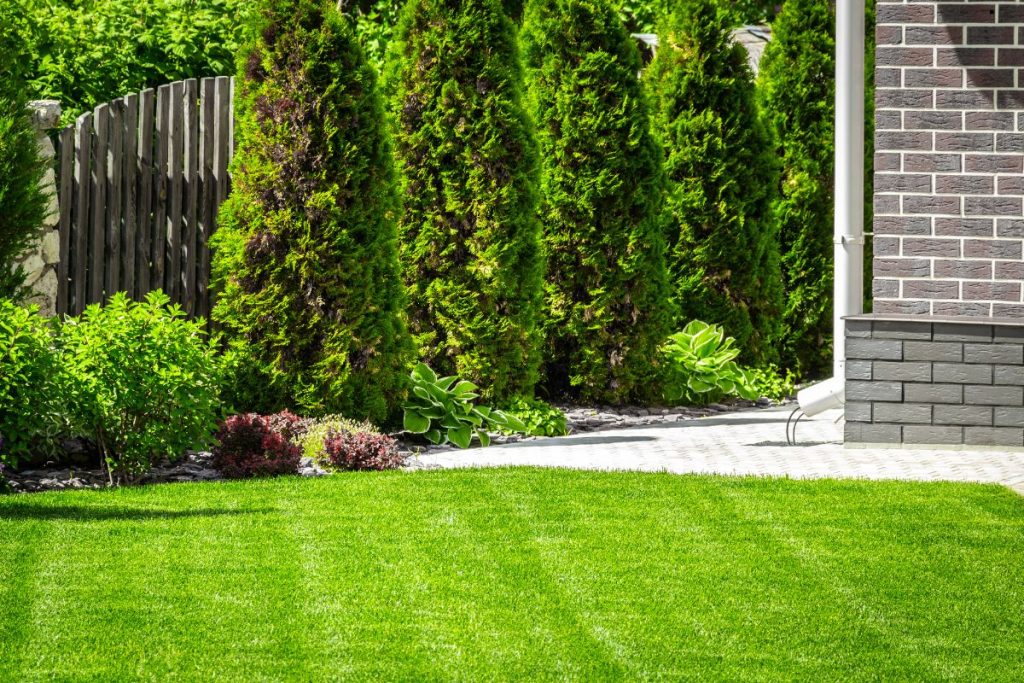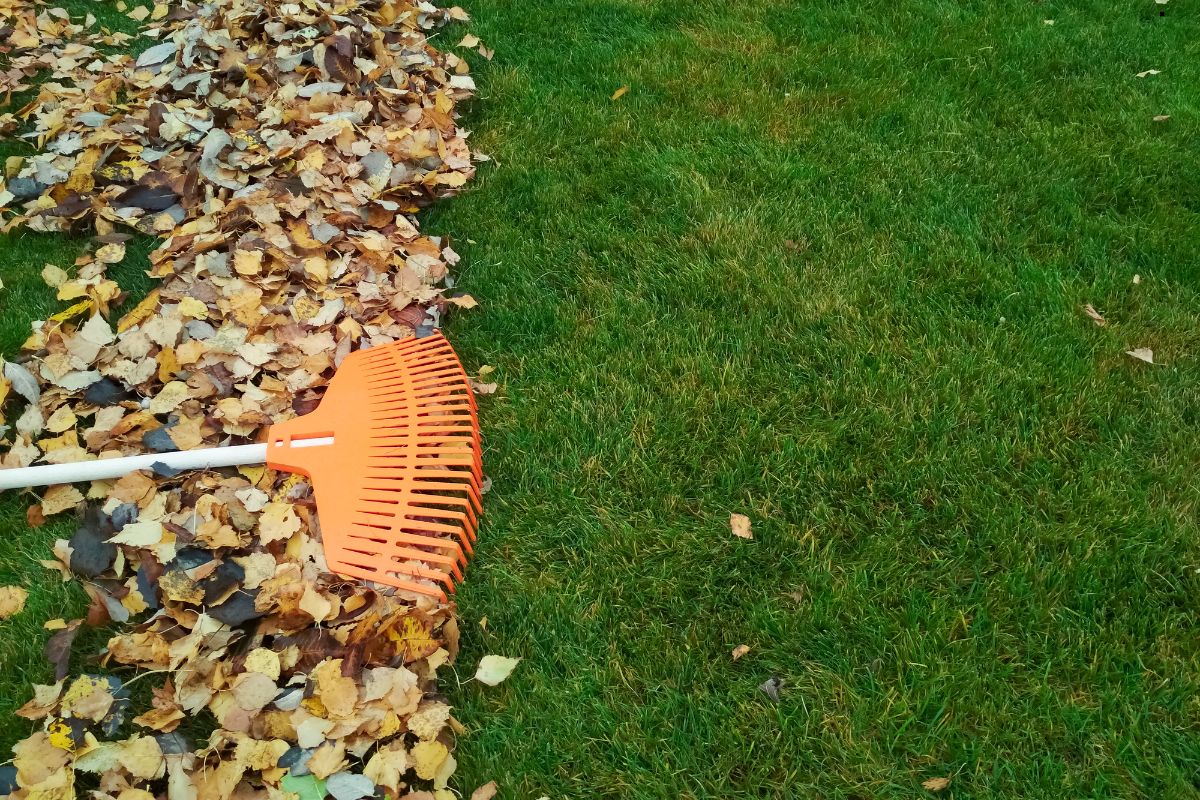
Want a lush, green lawn that’s the envy of the neighborhood in Joliet, IL? The key is understanding the seasonal needs of your lawn, from preparing for growth in the spring to protecting it during the harsh winter. This comprehensive guide provides actionable steps and expert tips to achieve a vibrant and healthy lawn all year round.
Spring Lawn Care: Preparing for Growth
As winter fades and the snow melts away, your lawn begins to wake up from its dormant state. Spring is the most important time to give your grass the care and attention it needs to grow lush, green, and healthy throughout the season. Proper maintenance during this period sets the foundation for strong root development, improved resilience, and a vibrant lawn that enhances your outdoor space.
With our professional lawn care services, we take the guesswork out of spring lawn preparation. From fertilization and aeration to weed control and overseeding, our expert team ensures your yard gets exactly what it needs to flourish.

Cleaning Up Winter Debris
The first step in spring lawn care is removing any accumulated debris from the winter months. This includes dead leaves, twigs, and any other materials that may have collected on your lawn. Raking removes thatch and allows sunlight and air to reach the grass blades, promoting healthy growth.
Soil Testing: Understanding Your Lawn’s Needs
A soil test is essential for understanding the specific nutrient needs of your lawn. A soil test will reveal the pH level and nutrient content of your soil, allowing you to tailor your fertilization program accordingly. You can purchase a soil test kit at your local garden center or contact a professional lawn care service for assistance.
Early Season Fertilization: A Jumpstart for Spring
After you’ve cleared away debris and tested your soil, it’s time for early-season fertilization. Choose a fertilizer that is specifically formulated for spring lawn care and apply it according to the manufacturer’s instructions. A slow-release fertilizer will provide a steady supply of nutrients over several weeks, promoting healthy growth and a vibrant green color.
Summer Lawn Care: Thriving Through the Heat
The summer months can be challenging for your lawn, with hot temperatures and potential drought conditions. Proper watering, mowing, and weed control are essential for maintaining a healthy lawn throughout the summer.
Watering Wisely: Best Practices for Hot Weather
Watering is crucial during the summer, but it’s important to do it wisely. Water deeply and infrequently, rather than shallowly and often. This encourages deeper root growth, making your lawn more drought-tolerant. Water early in the morning to minimize evaporation. Consider investing in a sprinkler system with a timer to automate your watering schedule.
Mowing Techniques: Achieving the Perfect Cut
Maintaining a healthy lawn starts with proper mowing techniques. Be sure to mow regularly, but never remove more than one-third of the grass blade at a time—cutting too much can stress the grass and increase its vulnerability to disease. Sharp mower blades are key to a clean cut, encouraging strong, healthy growth. Need expert lawn care? Call us today for professional service and a lush, green yard!
Weed Control: Keeping Unwanted Guests at Bay
Weeds can quickly take over your lawn if left unchecked. Apply a pre-emergent herbicide in the spring to prevent weed seeds from germinating. If weeds do appear, use a selective herbicide to target specific weeds without harming your grass. Regular mowing and proper fertilization can also help prevent weed growth.
Considering a switch to synthetic grass for your backyard but concerned about safety? You’re not alone! Many homeowners wonder if it’s the right choice, especially for families with kids, pets, or anyone looking for a secure and comfortable outdoor space. The great news is that modern synthetic grass is designed with safety, durability, and even eco-friendliness in mind.
Let’s explore four key reasons why synthetic grass is a smart and safe option for your backyard! Read more in our blog: Why Synthetic Grass is a Safe Choice.
Fall Lawn Care: Preparing for Winter Dormancy

Fall is the time to prepare your lawn for the winter dormancy period. Aeration, overseeding, and fall fertilization are essential for promoting healthy root growth and ensuring a lush, green lawn next spring.
Aeration and Overseeding: Rejuvenating Your Lawn
Aeration involves removing small plugs of soil from your lawn, which improves air circulation, water drainage, and nutrient absorption. Overseeding involves spreading grass seed over your existing lawn to fill in bare spots and thicken the turf. Aeration and overseeding are best done in the fall when temperatures are cooler and there is more moisture in the soil.
Fall Fertilization: Nourishing Roots for Winter
Fall fertilization is crucial for promoting healthy root growth and preparing your lawn for winter dormancy. Use a fertilizer that is specifically formulated for fall lawn care and apply it according to the manufacturer’s instructions. A slow-release fertilizer will provide a steady supply of nutrients throughout the winter, helping your lawn survive the cold months.
Leaf Removal: Preventing Winter Problems
Allowing leaves to pile up on your lawn during winter can lead to pest infestations and lawn diseases. To keep your grass healthy, regularly rake or blow away fallen leaves before they accumulate. Instead of discarding them, consider composting the leaves or using them as mulch for your garden beds to enrich the soil. Need help with seasonal lawn care? Call us today for expert service!
Winter Lawn Protection: Protecting Your Investment
While your lawn is dormant during the winter, it’s still important to protect it from damage. Minimizing foot traffic and preventing salt damage are key to ensuring a healthy lawn next spring.
Minimizing Foot Traffic: Reducing Stress on Dormant Grass
Avoid walking or driving on your lawn as much as possible during the winter months. Dormant grass is more susceptible to damage from foot traffic, which can lead to bare spots and thinning turf.
Salt Damage Prevention: Protecting Against Winter Chemicals
Salt used to melt ice on sidewalks and driveways can damage your lawn. Use salt sparingly and try to avoid getting it on your grass. You can also use a salt alternative that is less harmful to your lawn.
Troubleshooting Common Joliet Lawn Issues
Joliet lawns can face specific challenges. Being aware of these issues and addressing them promptly is key to a thriving lawn.
Grubs and Pests: Identifying and Treating Infestations
Grubs are the larvae of beetles that feed on grass roots, causing brown patches and thinning turf. If you suspect you have a grub infestation, apply an insecticide specifically formulated for grub control. Other common lawn pests include chinch bugs and sod webworms.
Lawn Diseases: Recognizing and Combating Fungal Infections
Lawn diseases, such as brown patch and dollar spot, can also damage your lawn. These fungal infections are often caused by excessive moisture and poor air circulation. Apply a fungicide to control lawn diseases and improve drainage.
Thatch Buildup: Managing Organic Matter Accumulation
Thatch is a layer of dead organic matter that accumulates on the surface of your lawn. Excessive thatch can prevent water and nutrients from reaching the soil, leading to a unhealthy lawn. Dethatching your lawn with a dethatching rake or power rake can remove thatch buildup.
Selecting the Best Grass Type for Your Joliet Lawn
Choosing the right grass type for your Joliet lawn is crucial for its long-term health and appearance. Consider factors like sun exposure, soil type, and traffic when selecting a grass type.
Kentucky bluegrass is a popular choice for Joliet lawns, as it is cold-tolerant and produces a dense, attractive turf. Perennial ryegrass is another good option, as it is fast-growing and provides good wear tolerance. Fine fescues are a good choice for shady areas.
Frequently Asked Questions About Joliet Lawn Care
How often should I water my lawn in Joliet?
Water deeply and infrequently, typically once or twice a week, depending on rainfall. Aim for 1-1.5 inches of water per week.
When is the best time to fertilize my lawn in Joliet?
Fertilize in the spring (April/May) and fall (September/October) for optimal results.
How do I get rid of weeds in my Joliet lawn?
Use a combination of pre-emergent and post-emergent herbicides, along with proper mowing and fertilization practices.
What is the best way to prevent grubs in my lawn?
Apply a preventative insecticide in the spring or early summer.
Should I use a lawn care service in Joliet?
A lawn care service can provide expert advice and services to help you achieve a healthy and beautiful lawn.
Enjoy a Beautiful and Healthy Lawn in Joliet!
By following these tips and techniques, you can achieve a beautiful and healthy lawn that you can be proud of. Remember to water wisely, mow properly, control weeds, and fertilize regularly. With a little effort, you can have the best lawn in the neighborhood! Contact us for professional lawn care assistance and let us help you achieve the lawn of your dreams!
